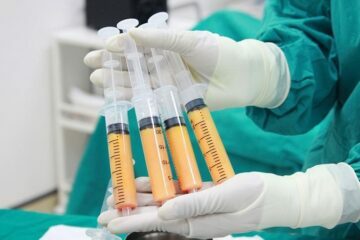How Does Fertility Preservation Work?

With the recent innovation in fertility medicine, women and men can now freeze their eggs or sperms respectively in the hope of fertilizing them in the near future. In cases wherein the individual has undergone or is currently undergoing cancer treatment, fertility questions tend to pop up. Rest be assured, fertility preservation helps patients who fall in such a situation.
The saving of sperm, egg, or any reproductive tissue with the motive of future conception is called fertility preservation. During a treatment like chemotherapy and radiation, the cancerous cells and healthy cells and tissue, including reproductive tissue, get destroyed. Hence, before the treatment for eliminating cancer begins, consult your doctor about your fertility concerns and what measures can be taken.
Always get the expert opinion from Celebration fertility preservation to help navigate you through this journey in understanding how fertility preservation works and all the possible risks and complications attached to it. Being vocal about your concerns is also essential, so do not be hesitant.
When the question of fertility preservation occurs to women, popular procedures like egg and ovarian tissue freezing are looked into. Apart from this, suppressing ovary activity during radiation, chemotherapy, and surgery to preserve fertility may be adopted depending on the case. For men, primarily, only two procedures are performed, sperm banking and freezing of testicular tissue.
Embryo freezing is the freezing of fertilized embryos for future use, while egg freezing is preserving unfertilized eggs for future use. Both procedures are carried out to a varied level of similarity. The process of collecting both an embryo and egg is similar; however, the timing differs. The former pays attention to the menstrual cycle while the latter doesn’t. This preservation is also called cryopreservation of the embryo or egg.
Ovarian tissue freezing is the freezing of the ovary tissue only to get it implanted back after the treatment for the illness is concluded successfully. Ovary tissue preservation is a minimally invasive procedure that is used to get the tissue from the ovaries. After which, it is frozen and thawed when it is ready to be implanted back into the uterus.
Sperm banking is the storage of semen at low temperatures for a prolonged period for future use. The semen collected from the patient is first tested for sperm count and the quality of sperm. Next, the single sample is split into multiple vials depending on the volume of the initial sample. Testicular tissue freezing involves removing the tissue that makes sperm in the testicles and preserving the tissue only to thaw and regain the sperm.
Leave a reply
You must be logged in to post a comment.





















